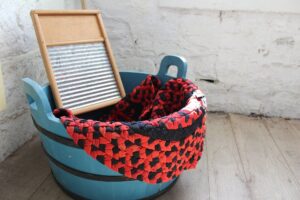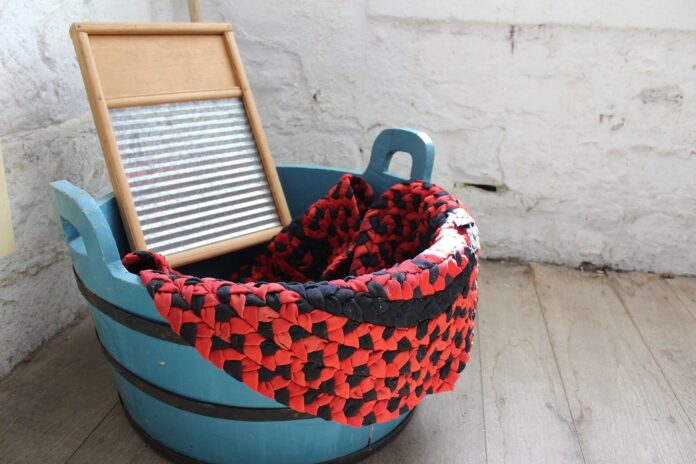After having discussed the preparations in part 1 of our series, today we will talk about the actual washing day of our coins! As on any big washing day, you have to ensure that everything is properly organised on coin washing day. First you must separate the coins you want to bathe. Make sure that, if possible, only a single coin metal is soaking in the washing trough at a time. The only exception are bi-metal coins, such as 1 and 2 euro coins. You should always use plastic (not metal) containers or bowls for washing and I recommend using a lukewarm jet of water from the tap for the subsequent rinsing process. An apron isn’t a bad idea either, so get dressed and let’s go.

First Steps Prior to Basic Cleaning
Let’s try to remove light soiling and minor corrosion from our “affected” coins. However, don’t expect the washing to “heal” scratched pieces, we won’t be able to achieve that. Instead we will try to gently clean the surfaces to improve the appearance of our coins. As has often been mentioned, you need to proceed with caution. Not everything can or will work. That’s why you should always start by testing the methods with less well-preserved coins in order to carefully observe and learn.
The subsequent drying process is very important, too, because a lot of things can go wrong and corrosion that has just been removed can thrive again as a result of insufficient drying. Everything takes its time, don’t forget that. If you’re in a rush or under time pressure, don’t even get started. One more thing: always take notes about your cleaning attempts, such notes are very useful. If you proclaim another coin washing day next year, you will have forgotten a lot and need to start all over again. But if you made notes about your experiences, you will be able to use them. People working in large laboratories write notes and protocols during experiments, too.
Try to Clean the Coins Without Water
In case of soiling, a wooden toothpick and a rubber can be very helpful. Always proceed with caution and exert as little pressure as possible since this could leave marks. Try to gently remove the dirt at the rim or at the contours of lettering or image by means of a toothpick. Continue the work with a rubber or a cotton swab. Then, a soap bath will remove the remaining dirt. It’s always worth a shot.
The Cleaning Coin Bath, Cold or Warm?
After having assorted our coins according to different metals, the basic cleaning process can start. Working with warm water isn’t advisable for every metal, please pay attention to this. When listing the most important coin metals, I will talk about this in detail. To stir the soapy water, only use wooden or plastic objects and make sure that there aren’t too many coins in the bath at once, the pieces should not touch each other. You have to try what works best for you to find out whether to use curd soap or washing-up liquid for the soap bath and whether to add soda or not. Personally, I always use a degreasing dishwashing liquid for the first cleaning attempt. If the bath doesn’t have the desired effect, you can increase the concentration of the soap solution step by step.
If you wish, you can also use baking soda for your coin bath. Attention: baking soda must not come into contact with your eyes, it’s advisable to wear safety goggles! When dissolved in water, baking soda releases carbon dioxide, which removes dirt particles from the coin. Apply pure lemon juice only for a short amount of time, then rinse the piece well. Remember: the proof of the pudding is in the eating!
Aluminium Coins (Such as German Empire, GDR, Poland, Czechoslovakia)
These coins will not be attracted by a magnet. If you don’t know for sure which material the coin is made of, you can use a magnet to find out.
These pieces can endure a bath in a cold soap solution for up to an hour. You can add some dishwashing liquid to the water to lower the tension. Then gently try to remove the softened dirt with your thumb and forefinger. Do not exert great pressure. After drying, you can gently rub the piece with baking soda. Then rinse again with warm water and let it dry properly.

Iron Coins (Such as German Empire, Emergency Money, Germany)
Regarding these pieces, you will mainly struggle with rust, and unfortunately you can’t do anything to save some of the pieces because they are too damaged by corrosion. Flash rust, though, should be tackled to prevent the rust from spreading further. There is no guarantee for success! Remember that we are mainly dealing with alloys, with iron being only one of the components of the coin. This is also true for the 1, 2 and 5 cent pieces from the Euro era. Therefore, inform yourself before cleaning coins! A warm soap bath does not damage the pieces. Afterwards you have to rinse them properly and let them dry for a long time. You need to try whether a hair dryer or a warm radiator works better for you. In tough cases, you may apply a bit of penetrating oil with a cotton swab and let it work, rinse well and degrease it with some petroleum ether.
Copper Coins (Such as German Empire, Germany)
Please note that we are usually not dealing with pure copper coins, but with copper alloys. Again, I recommend a classic lukewarm soap bath. Always make sure to bath a single type of coin metal, do not add other metals to the bath at the same time as this could lead to discolouration. The pieces can be left in the soap bath for a few hours. You can rub them gently between thumb and forefinger, but I don’t think much of using a soft brush. Rinse them thoroughly and, most importantly, dry them properly. After drying, you can gently rub the piece with baking soda, then rinse again with warm water and let them dry. Always use gloves or coated coin tweezers to touch cleaned coins to avoid fingerprints.

Copper Alloys (Such as German Empire, GDR, Germany)
Please assort the pieces according to the type of alloy and only put pieces of one type in the soap bath at once. A coin catalogue will provide you with information about the type of alloy. If you aren’t satisfied with the result, try another soap bath. Otherwise proceed as described above.
Nickel (Such as German Empire 25 Pfennig)
Nickel is a very tough coin material; therefore, a soap bath is usually enough to clean the pieces, you may also use a microfibre cloth as a cleaning aid. However, I prefer to rub them gently between thumb and forefinger. So, always let coins soak for a while, then rinse and dry them. Even if most pieces are shiny, do not polish them!

Zinc (Such as German Empire, Germany, Protectorate of Bohemia and Moravia)
If such pieces are already corroded, they are usually lost. Experiments are of no use here. Even though some collectors believe that brushing the pieces with a fine brass brush might help, this method does not only clean the coin but also damages the material. Therefore I wouldn’t recommend doing it. Whether you use some lemon juice for cleaning or not is up to you, also in this case there are collectors who did so and achieved positive results. My advice: if you want to try it, always test the method with pieces that aren’t of much value anyway. Don’t forget to rinse and to dry the pieces afterwards.
Tin (Such as Medals)
Tin was little used as coin material because it is a very soft metal. However, there are many medals made of tin. Often a soap bath is enough to make the pieces more attractive. Since tin is very soft, you should never use a brush for cleaning, no matter how soft it is. A microfibre cloth is enough. If individual pieces are afflicted by the so-called tin pest, there’s hardly anything you could do to save them. Such pieces will repeatedly get white spots and deteriorate very slowly.
Do!
- Make sure to always treat individual pieces of the same texture and never different metals at the same time.
- Work according to pre-defined steps, this will help you become more practiced.
- Make notes about your observations and the results of the cleaning process to be able to review them later.
- Make sure to bath and to dry the coins long enough.
- Always be considerate of children and animals in the house!
Don’t!
- The water shouldn’t be too hot (danger of scalding)!
- Do not leave hot water or cleaning products open or unattended!
- Never confuse baking soda (sodium bicarbonate) with caustic soda (sodium hydroxide, soda lye) as the latter is very corrosive!
- Never store pieces made of copper together with other coin metals!
- Don’t use a brush, no matter how soft it is!
Trying makes perfect – however, always proceed with caution or you will do more harm than good.
In the third and last part of this series, I will give some tips for cleaning precious metals such as gold and silver. Moreover, I will take a closer look at the modern way of storing coins in “slabs”: are these coin holders really safe?
Here you can read part 1, which is dedicated to the basics and preparations of coin care.
Find out more about our author in Reiner Graff’s Who’s Who.
You can find numerous popular articles by numiscontrol on zero euro banknotes, euro coins, the treasures in our wallets and much more in our archive.




